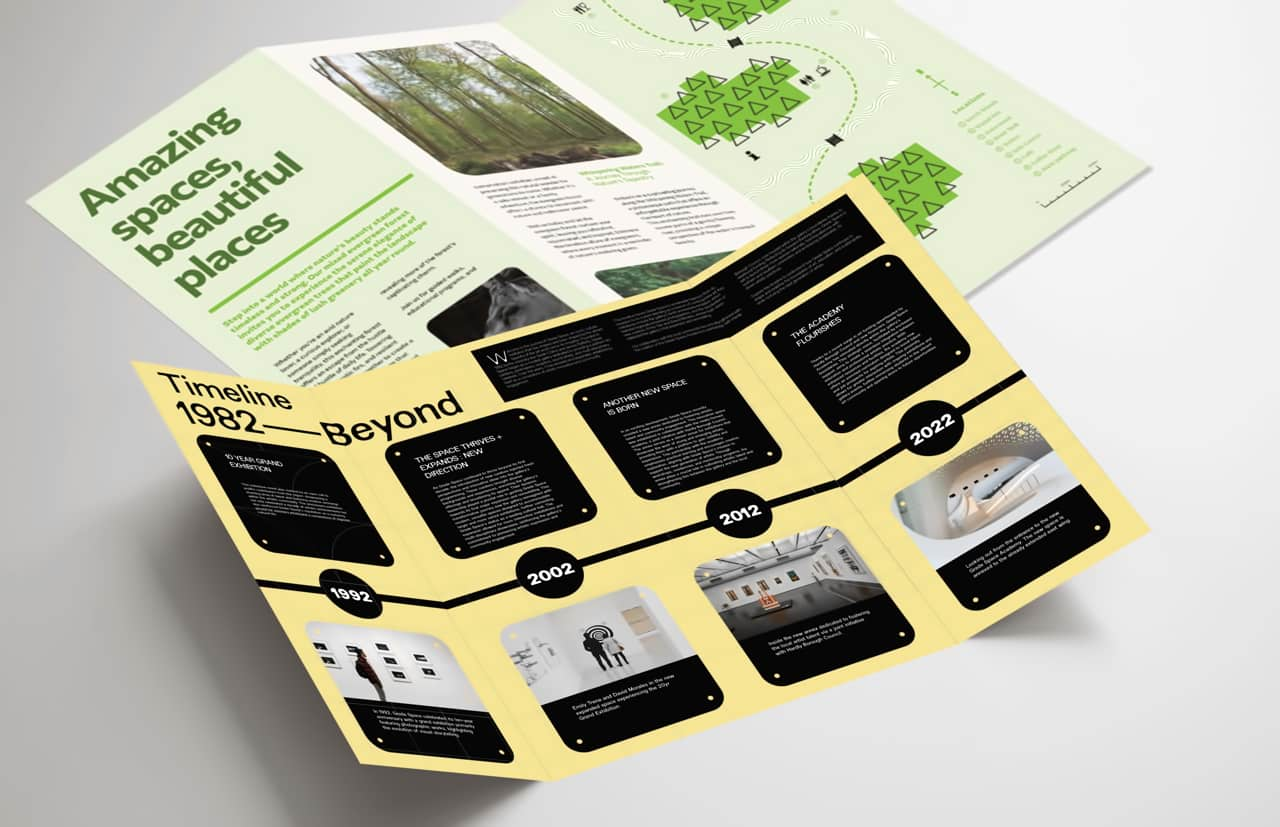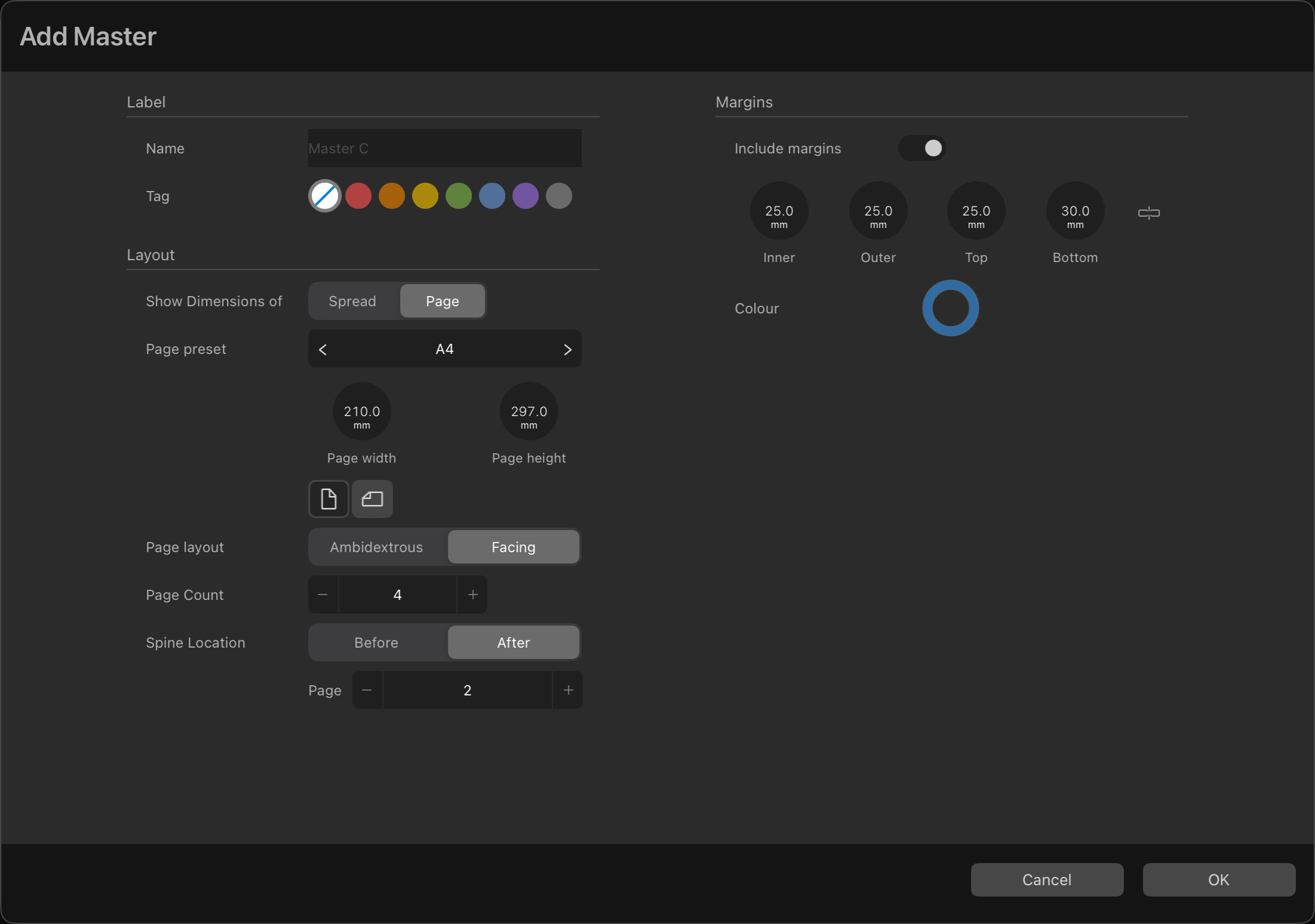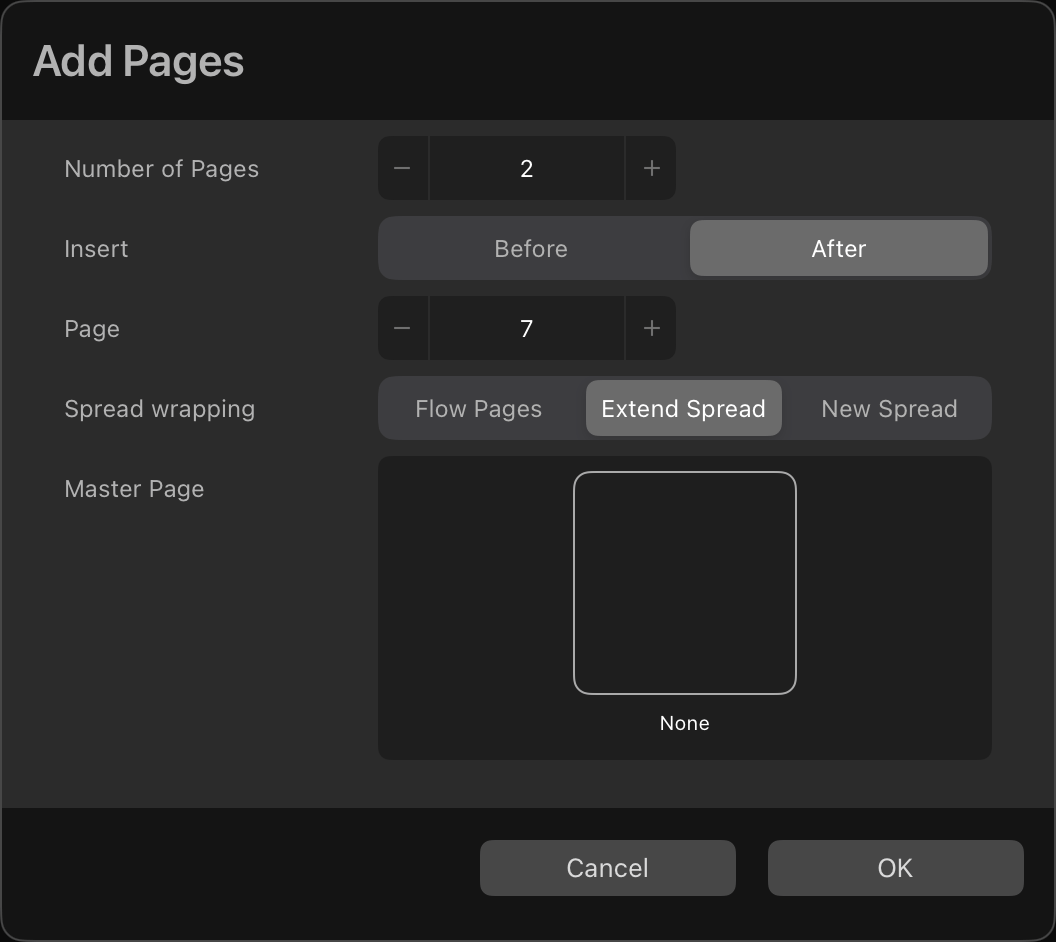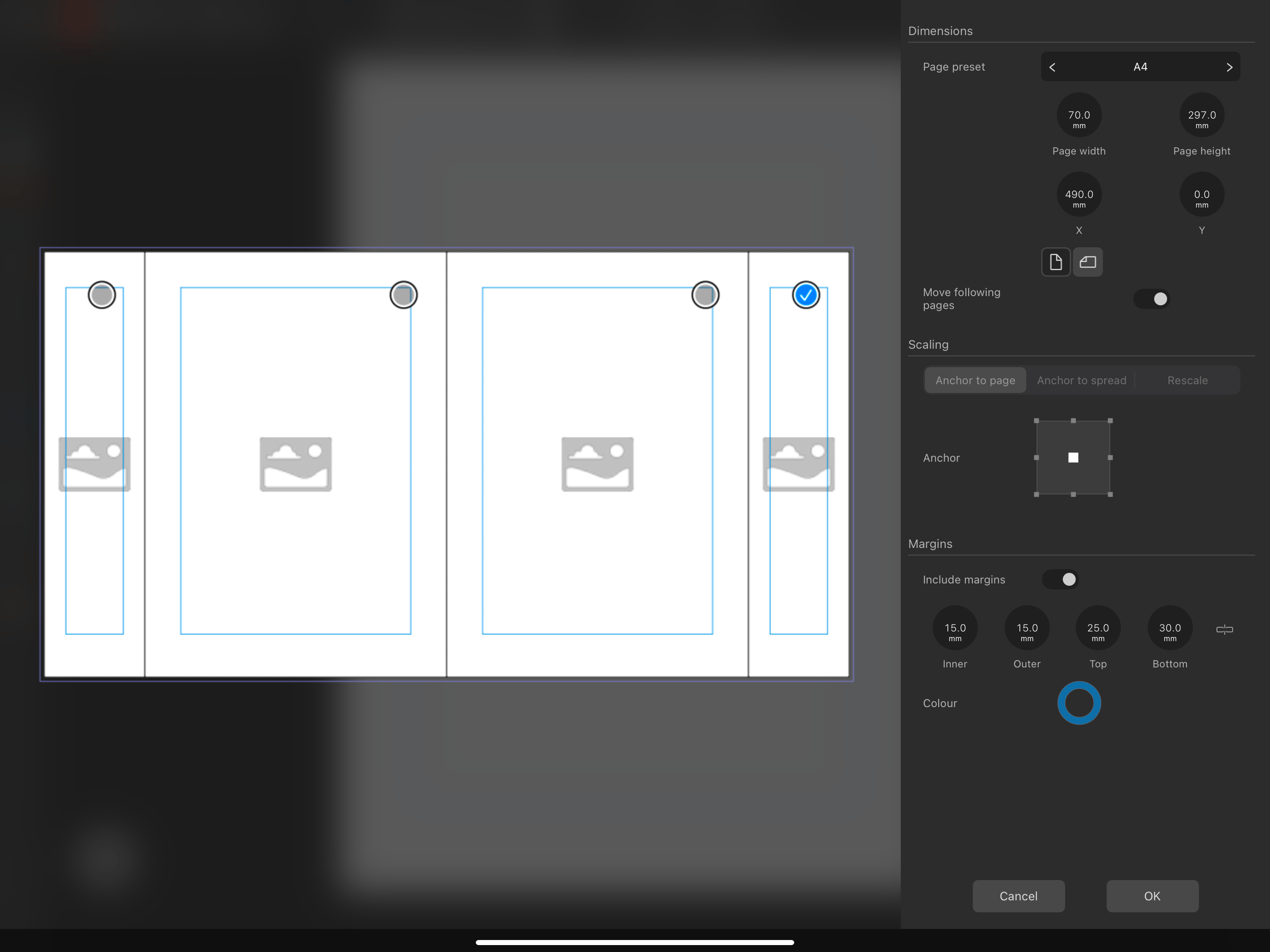
Multi-page spreads can be created in two ways:
- As a master page, which can be used to create new publication pages with the same page count, page dimensions, and spine location as the master.
- By extending an existing spread with new publication pages, either by:
- adding new pages at the required positions within the spread.
- moving existing pages by disabling Reflow Pages and then dragging and dropping existing pages into the required positions.
Creating a multi-page master
Using master pages to create multi-page spreads is advised for the 'cleanest' results.
For any spread you create from a master, Affinity knows how many pages the spread should contain. 'Ghost' pages are displayed if the spread contains fewer pages than expected.

After creating a master, its spine location can't be edited.
If you're designing for the front and back of a multi-page spread with an off-centre spine, create two masters with mirrored spine locations.
Extending an existing spread
For quickness, existing spreads can be extended with new pages. You might prefer this over starting with a multi-page master if your document's pages will be only one multi-page spread. For example, when you're designing:
- A book's dust jacket.
- A magazine cover with a front cover flap.
- A publication containing just one gatefold spread, such as a magazine.

Changing individual pages' dimensions
Depending on the type of folding spread or document you're designing, you may need to edit the dimensions of certain pages.
On the Spread Properties dialog, you can select individual pages whose dimensions you wish to edit.

Exporting and professional printing
A press-ready PDF of a multi-page spread that is exported with Include printers marks and Include crop marks enabled will also include fold marks.
Before designing a multi-page spread's content, it is important to discuss your publication's requirements with your print provider.
For example, one panel of a trifold brochure needs to be narrower than the other two, but by how much depends on your chosen paper stock. Your print provider is best placed to provide the necessary advice.